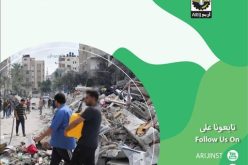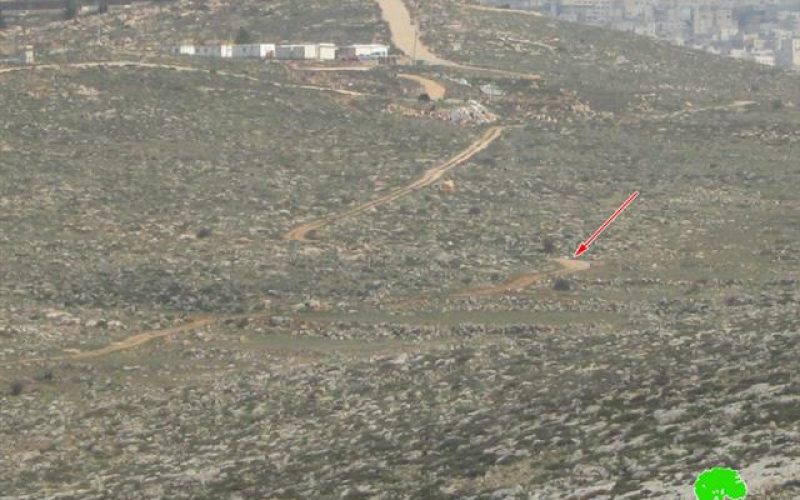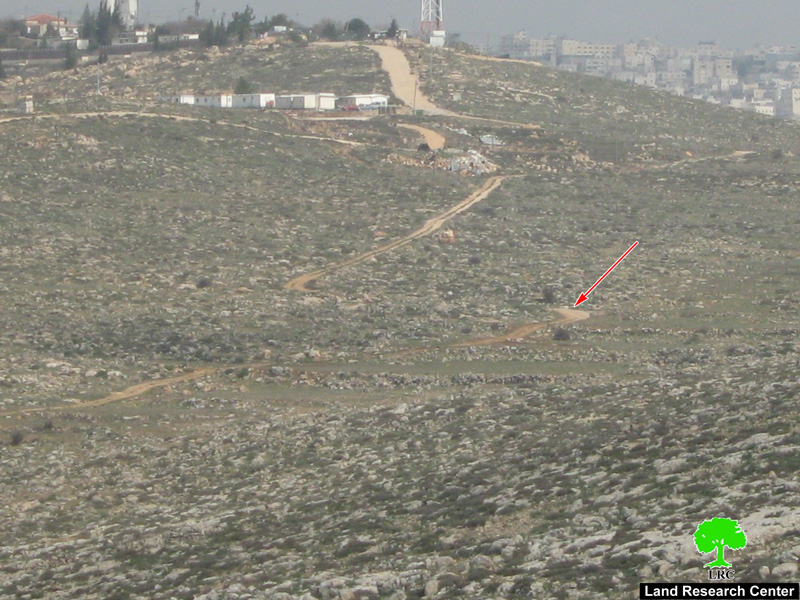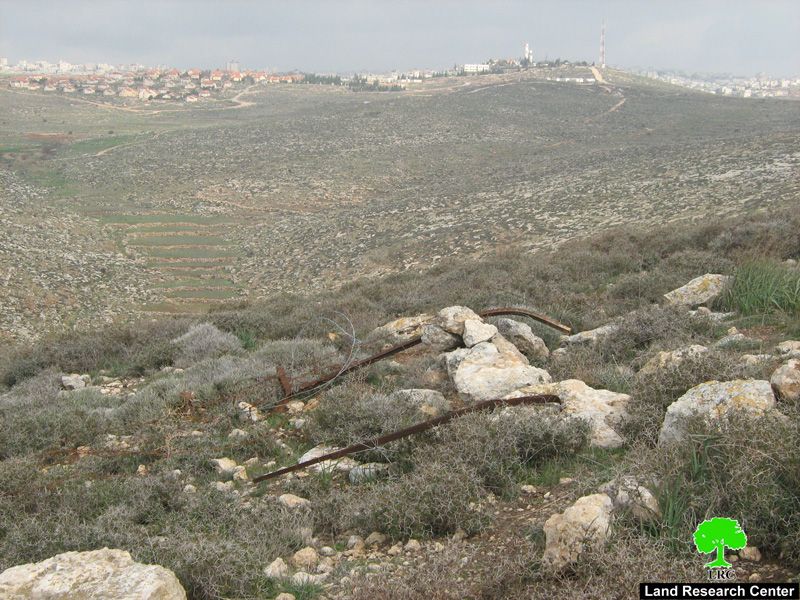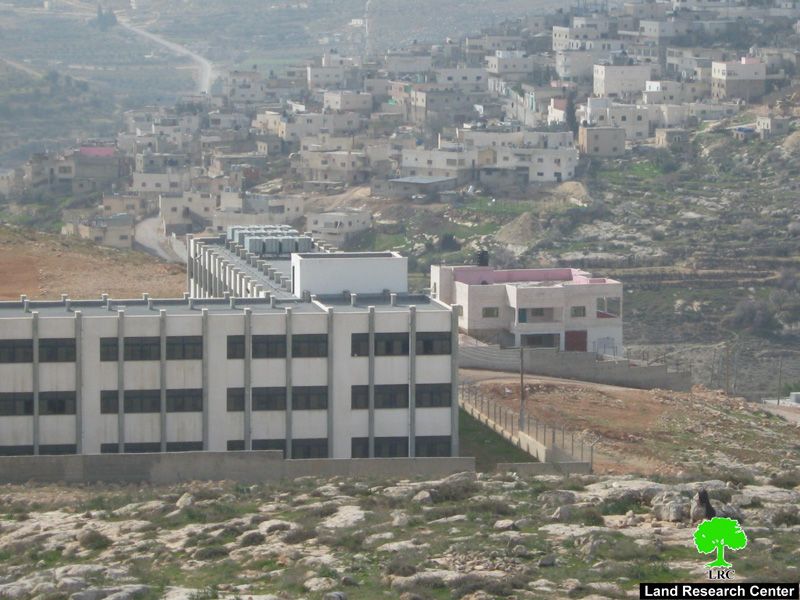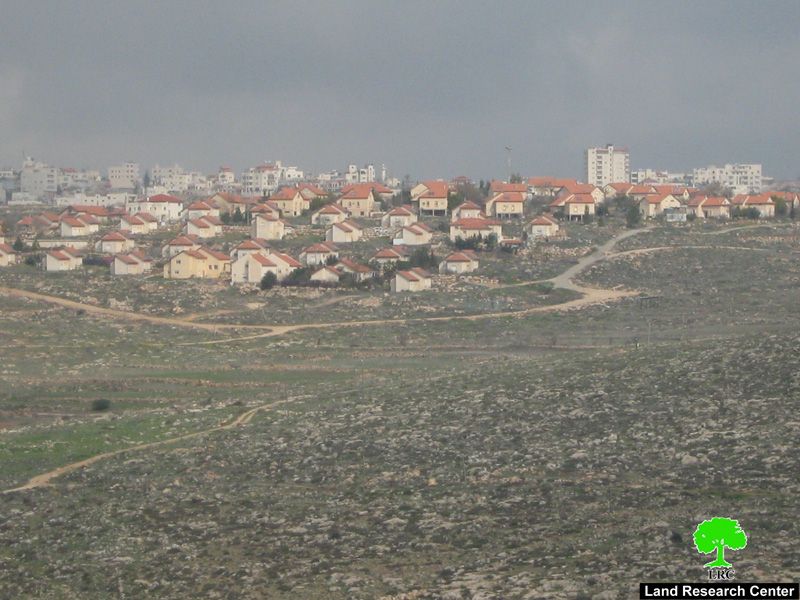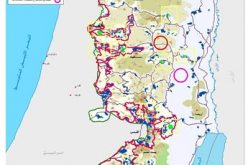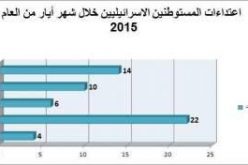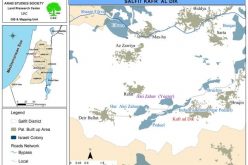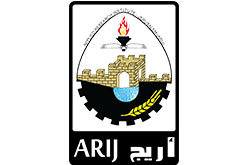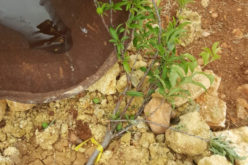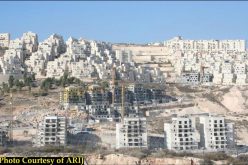A group of settlers from Haqai colony attacked with bulldozers the private land of Mr. Kazim Mohammed Al Hallaq from ar Rihiya village, Hebron governorate, destroying the fence for the purpose of building a new colonial road and annexing the target land to the colony. The target land which is located in Wadi Al Mughayer, Khallet Al Quds, has an area of about 200 dunums (one dunum equals 1000 M2) and distances half km form the colony. In addition, about 200 olive seedlings belonging to Mr. Jamil Shehda Al Hallaq and adjacent to Mr. Kazim's land were uprooted by the Israeli bulldozers. The settlers' aggression against the land took place under the sight of students and teachers at the ar Rihiya secondary boys school which is located only 50 meters away from the target land. This situation prompted them to intervene in an attempt to stop the attack, hence, fierce clashes took place in which three students were moderately injured by gun fire on the part of the Israeli soldiers who rushed to the scene in support of menacing settlers.
(Photo 1: the arrow indicates to the newly opened road to Haqai colony)
In an interview with LRC field worker, Mr. Kazim Al Hallaq said the following: ' Although my land is far from the colony it has become a target for colonial expansion and annexation. I was surprised to see an Israeli bulldozer and a group of settlers accompanied by the head of the military district coordination office ( DCO) in Hebron attacking my land and damaging the fenced around it. I approached the head of the DCO and asked him about the reason behind this aggression and he only replied with two words ' military order'. They have vandalized my land under a military pretext, although the real aim is to take our land and dismiss us out of it but this will never by realized'.
(Photo 2: Part of the fence destroyed by Haqai settlers around the land of Mr. Kazim Al Hallaq))
A glimpse at ar Rihiya village
It is situated about 12 km to the south of Hebron city. It's population mounts to 4000 (PCBS-2007). More than 80% of the work force are laborers inside Israel while the rest works as farmers. The village's total land area is 482 dunums, including the built up area.
(Photo 3: an overview of ar Rihiya village)
A glimpse at Haqai colony
Established over Palestinian owned land in 1984 at the distance of 2 km from the village of ar Rihiya. Its municipal area is 872 dunums of which 233 dunums are built up zone. By the end of 2006 it had the total population of 477 settler. Ever since its establishment the colony has been expanding at the expense of adjacent Palestinian land against all norms and logics.
(Photo 4: an overview of Haqai colony)
The following is a list of the most prominent violations and aggressions initiated by the Haqai settlers:
1. Continuous prevention of farmers and land owners from tending their land located in the vicinity of the colony. More than 500 family members from Al Hirsh extended family are supposed to benefit from their land which is loated immediately at the south eastern fence of the colony.
2. In 1992, owners of the abovementioned land were driven out of their land under gun point by the Israeli settlers led by the leader of the colony at the time the extremist Mumi. After this attack land owners filled a complaint to the Israeli police but in vain. In the same year, more than 350 dunums of land were confiscated from the family of Al Hirsh for the expansion of the colony.
3. In 1996, farmer Mahmud Ahmad Al Hirsh brought in construction materials along with a small hammer to get a cistern dug inside his land for rain harvest, but, settlers beat him and dismissed him out of his land and he never succeeded to complete this project.
4. In 1997, the extremist leader of the colony, Piri, got a new road opened at the edge of Al Hirsh's family who presented a complaint to the Israeli police but to no avail.
5. In 1999, electric poles were installed on confiscated land , but hundreds of citizens rushed to the scene accompanied by large presence of local and intentional media and uprooted all the poles.
6. In 2001, an extremist settler named Joseph got a new road opened in the eastern part of Al Hirsh family leading to a another confiscated hill top at the distance of 1 km from the Haqai colony.
7. In October, 2001, a group of settlers beat the shepherd Mahmud Isa Musa Al Hirsh whilst grazing his cattle in his land causing moderate injuries.
In an interview with LRC field worker, Mr. Khalil Hasan Al Hirsh, 50 years old, gave the following account: ' The extremist settlers of Haqai colony have been attacking us ever since the emancipation of their colony. At the beginning they allowed us to reach our land, but, starting from 1992 they have prevented us from doing so and drove us out of our land many times under gun point. At one time, the shepherd Mahmud Isa Al Hirsh was attacked by a group of settlers, beaten and then detained with his cattle to Kiriyat Arba' colony. At the end of the day, he was released but only after confiscating all his cattle. Our land has become uncultivable because of the settlers' ban on us'.
( Map 1: Location of ar Rihiya village and Haqai colony, Hebron)
In light of the above-mentioned, LRC views these developments as illegal and a preemptive step towards the confiscation of more Palestinian land. Such actions are racist ones as the Israeli occupation authorities continue to demolish Palestinian houses and constructions, particularly, in Jerusalem, and at the same time, go on building bypass roads and settlement without h any deterrents.
LRC calls on:
1. The International community to immediate intervene with the Israeli authorities to stop Israeli construction in the occupied Palestinian territories and dismantle all colonies;
2. All human rights organizations, at the local, regional and international level to use pressure against the American administration to work for an immediate stoppage of all sorts of Israeli construction works, including colonial and bypass roads which all constitute a serious threat tot eh very existence of the indigenous Palestinian people.
Prepared by:
The Land Research Center
LRC

Related Articles
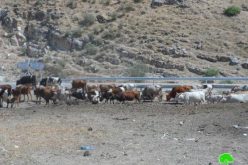
The Israeli occupation Authorities confiscated two cows and drugged five others in Toubas governorate
